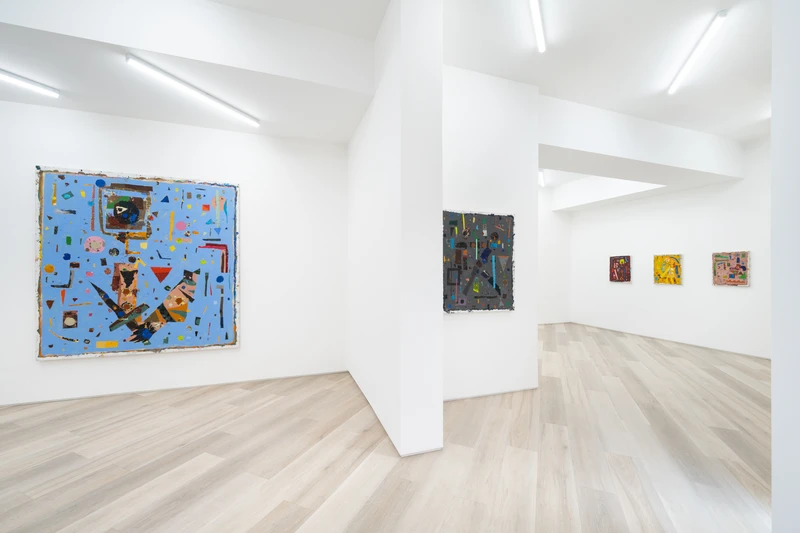Martin Daiber: Onda Expansiva (Expanding Wave)
30 Jan-1 Mar 2025
PV 30 Jan 2025, 6-8pm


In the 19th century, Modernist literature rejected singular, straightforward narratives in favour of digressive or fragmented storylines. Around the same time, the Surrealist artists began exploring dreams and the human subconscious in favour of symbolic representation. Argentine author Julio Cortazar wrote Hopscotch in 1963, notable for being a novel that could be read straightforwardly, or back to front, or at random. Cortazar considered narrative a "beautiful madness," where meaning was derived from broken or fragmented bits, cyclical and repetitive without finite endings. “Where are the beginnings, the endings, and most importantly, the middles?” he asks. We can see a similar ideology being adopted by Daiber, whose new body of work embodies the same cyclical, almost "anti-linear" approach to narrative: all the parts seem to be in place, but almost as if they're deconstructed and placed back together, a sort of disassociated jumble of signs and symbols. As viewers, we see elements that may or may not be recognizable parts.
"My working method has always had a constructive character," he states. "The painting is built up from fragments, and the painting seems to have exploded, and these fragments return as a result of an expanding wave, floating in space, seeking to break free from the boundaries of the canvas."
Waves, too, follow unpredictable patterns - they lull us with their undulations or break free into wild, torrential, even digressive bursts. But at a structural level, they follow repeated patterns, and so it seems appropriate that Daiber alludes to this hidden rhythm or structure behind the constitution of his paintings. Studies have even proven that literature - precisely like waves - adheres to predictable fractal patterns. In fact, the word fractal comes from frangere: "to break apart." Any one of Daiber's eleven paintings also seems to be a starburst or moment, where the work's constitutional parts seem dismantled, scattered, frozen somewhere in the middle... somewhere between beginning and ending. "There is a sense that these paintings capture a moment suspended in time, one that could at any moment gain movement, breaking the seemingly precarious balance."
And just like any natural or creative process, there is an inherent evolution: "Not something I sought but rather something that happened, and as with everything in the creative process, it is a consequence of something." We warmly invite you to explore Daiber's new works and immerse yourself in the artist's unique perspective.